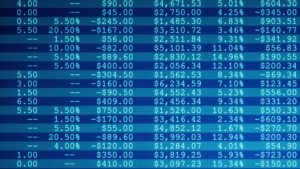Economic Factors
COPAS provides the following information as a resource and convenience to the industry.
Questions related to these factors are addressed on the Frequently Asked Questions page.
Employee Benefits Percentage
Upper Limitation + 34%, effective January 1, 2026
Certain accounting procedures allow the operator to charge its actual cost of providing employee benefits, not to exceed the percentage most recently recommended by COPAS. COPAS conducts an annual survey of payroll and benefits to determine the resulting rate, which is effective January 1 of the applicable year.
Employee Benefits Limitation Percentages Chart for Historical Data
| Effective January 1 | APPROVED Limitation Percentage | Comments |
| 2026 | 34% | |
| 2025 | 34% | |
| 2024 | 35% | |
| 2023 | 35% | |
| 2022 | 35% | |
| 2021= | 35% | |
| 2020 | 35% |
COPAS Overhead Adjustment Factors
+6.3% effective April 1, 2025
COPAS Accounting Procedures provide for an annual adjustment of the fixed rate overhead for drilling and producing wells.
COPAS offers an interactive rate calculator:
COPAS Overhead Adjustment Factors and Overhead Rate Calculator
View a chart of current and cumulative escalation factors:
COPAS Accounting Procedures provide for an annual adjustment of the fixed rate overhead for drilling and producing wells. The base overhead rates to which such adjustments apply are contained in the Accounting Procedure attached to each individual Joint Operating Agreement, and are a matter of agreement among the parties thereto. COPAS does not publish or recommend any specific overhead rates or overhead surveys, as the rates are derived through negotiation among the parties to an agreement. For guidelines in the establishment of an appropriate overhead rate, see AG-23, Overhead Negotiation and Calculation, which is available from our Online Store & Publications.
Note: After March 2003, the Crude Petroleum and Gas Production Workers index is no longer available for use in the annual calculation of overhead adjustment called for in the various COPAS model forms, which impacts the adjustments scheduled to occur in and after April 2004. A blending of the Oil and Gas Extraction Index with the Professional and Technical Services Index has been shown to approximate the data from the old Crude Petroleum and Natural Gas Workers Index. Accordingly, COPAS has calculated the percentage change in the simple average of the Oil and Gas Extraction Index and the Professional and Technical Services Index, commencing in April 2004. See Model Form Interpretation 50 (MFI-50), Overhead Adjustment Index for guidance regarding use of the replacement index in calculating the overhead adjustment, as well as other economic factors, such as the loading and unloading rates. COPAS publishes this rate as a convenience to the industry. Model Form Interpretation 50 suggests that each company make its own determination as to whether or not it needs to amend its contracts to use this or any other alternate index.
Audit Per Diem Rate
$1,225, effective April 1, 2025
COPAS calculates and publishes the audit per diem rate as required under certain COPAS Accounting Procedures, and as a resource for non-operators to establish benchmarks when sharing costs for audits conducted in the U.S. While some contract auditors and audit firms may use the audit per diem rate as a benchmark to establish their rates and fees, per the requirements of the COPAS Antitrust policy, COPAS does not officially endorse using the audit per diem rate in this way. COPAS no longer publishes a per diem rate for audits conducted outside the U.S.
| Effective Date | Per Diem Rate* |
| 4/1/2025 | $1,225 |
| 4/1/2024 | $1,185 |
| 4/1/2023 | $1,130 |
| 4/1/2022 | $1,060 |
| 4/1/2021 | $1,015 |
| 4/1/2020 | $980 |
| 4/1/2019 | $960 |
| 4/1/2018 | $930 |
| 4/1/2017 | $910 |
Workers Compensation Insurance Manual Rates
effective April 1, 2025 (see annual rates below)
Attached please find COPAS published Workers Compensation Manual Rates for the years 2017 through 2023 and examples of the application of the Workers Compensation Manual Rates. The rates, which vary by job classification and state, are effective January 1 of the applicable year. For more information, refer to COPAS MFI-31 available from our On-line Store & Publications.
Rates for previous years: 2024 | 2023 | 2022 | 2021 | 2020 | 2019 | 2018 | 2017
Loading and Unloading Rates
$1.12 per hundred weight, effective April 1, 2025
Loading and unloading costs are an element of material pricing. Certain COPAS Model Form Accounting Procedures state the Operator may use specified loading and unloading rates that are adjusted by the same percentage used to adjust overhead rates (rounded to the nearest cent). The resulting rate is effective April 1 of the applicable year. For more information, refer to COPAS MFI-38 available from our On-line Store & Publications.
| Effective Date | Rate Per Hundred Weight |
| 4/1/2025 | $1.12 |
| 4/1/2024 | $1.05 |
| 4/1/2023 | $1.00 |
| 4/1/2022 | $0.93 |
| 4/1/2021 | $0.93 |
| 4/1/2020 | $0.92 |
| 4/1/2019 | $0.87 |
| 4/1/2018 | $0.83 |
| 4/1/2017 | $0.82 |
Excluded Amount
$2,700, effective April 1, 2025
Most COPAS Accounting Procedures prior to COPAS 2012 require the application of freight equalization if trucking charges are greater than the Excluded Amount. Although actual trucking charges are primarily used as industry practice, since they are easily supported through vendor invoices, under many model forms freight equalization is still required in cases where actual transportation cost is greater than the cost between the railpoint and property, and the requirement for COPAS to publish the Excluded Amount is still in effect. By raising the excluded amount, the pool of invoices that Operators and Auditors have to examine for potential freight equalization is reduced. COPAS Materials Subcommittee determined the Excluded Amount based on an average of transportation costs, provided by several companies represented by the Materials Subcommittee, and comparable transportation routes.
| COPAS Excluded Amounts | |
| Date | Excluded Amount |
| April 1, 2017 | $1,600 |
| April 1, 2018 | $1,600 |
| April 1, 2019 | $2,000 |
| April 1, 2020 | $2,000 |
| April 1, 2021 | $2,000 |
| April 1, 2022 | $2,300 |
| April 1, 2023 | $3,000 |
| April 1, 2024 | $2,700 |
| April 1, 2025 | $2,700 |
Used-Equipment Percentages
75%/65%* for B condition, 50% for C condition, effective January 1, 2015
Used equipment transferred between properties with different ownership or between a property and a warehouse, is valued at a percentage of the current new prices times the condition value. While most COPAS Model Form Accounting Procedures (APs) provide for a fixed percentage that corresponds to the condition of the equipment, the 1995 and Project Team APs have an option for used material to be priced at the “percentage most recently recommended by COPAS.” For this reason, COPAS conducts an annual survey to determine the used-equipment percentages that are effective January 1 of the applicable year.
* B Condition material is charged at 75% of current new price. B condition material is credited at 75% of current new price if the material was new when it was charged to the property, or at 65% if the material was used when it was charged to the property. C condition material is always charged and credited at 50% of current market value, subject to certain provisions concerning reconditioning costs.
Tubular Pricing Updates and HPMs
The posting of HPMs (Historical Price Multipliers) as well as tubular pricing updates on this website was suspended in January 2007. The HPMs developed for 2007 and thereafter are designed to work only with the new web-based CEPS product. Annual subscriptions to CEPS are available from our On-line Store & Publications.
Vehicle Rates
effective April 1, 2025 (see annual rates below)
COPAS model form Accounting Procedures allow use of PMTA rates as an option to bill costs of operator-owned vehicles. The PMTA organization disbanded effective January 1, 2014, and advised COPAS that it would no longer publish rates after the 2013 rates. As such, COPAS devised and approved an equitable alternative similar to the previously published PMTA rates.
To manage consistency with other COPAS economic factors, COPAS, upon annual Council approval, will begin publishing automotive rates effective April 1, 2014. The annual rates will be provided at no charge. For convenience, vehicle rates are linked below:
Vehicle rate downloads: 2025 | 2024 | 2023 | 2022 | 2021 | 2020 | 2019 | 2018 | 2017
For a complete discussion, please refer to COPAS Model Form Interpretation 55.

















